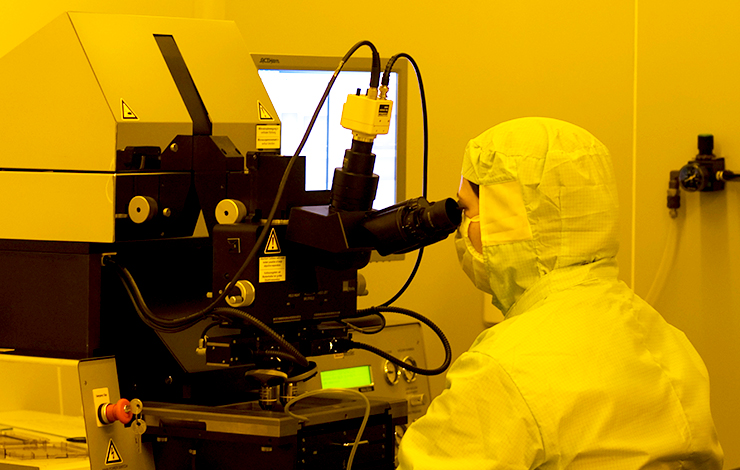


Resistivity Measurement - Four Point Probe
Location: Lab 0.2
Responsible: Alexandra Gonçalves
Description: The most widely employed method for measuring semiconductor resistivities is the four-point-probe technique, which is easy to implement, nondestructive, and especially convenient for probing the wafers used in device fabrication.
Resistivity measurements are made on the flat ends of the crystal, were current (I) is passed through the outer probes and voltages (V) measured between the inner probes. The measure resistance (V/I) is converted to resistivity (W.cm):
Resistivity =(V/I)xWxCF [Ohm.cm]
Resistivity measurements are made on the flat ends of the crystal, were current (I) is passed through the outer probes and voltages (V) measured between the inner probes. The measure resistance (V/I) is converted to resistivity (W.cm):
Resistivity =(V/I)xWxCF [Ohm.cm]
Usually, thickness (W) is very superior to probe spacing (s) in semiconductor materials characterization. In this situation the value used for the correction factor (CF) is 4.532, and the previous formula becomes:
Resistivity =4.532x(V/I)xW [Ohm.cm]









